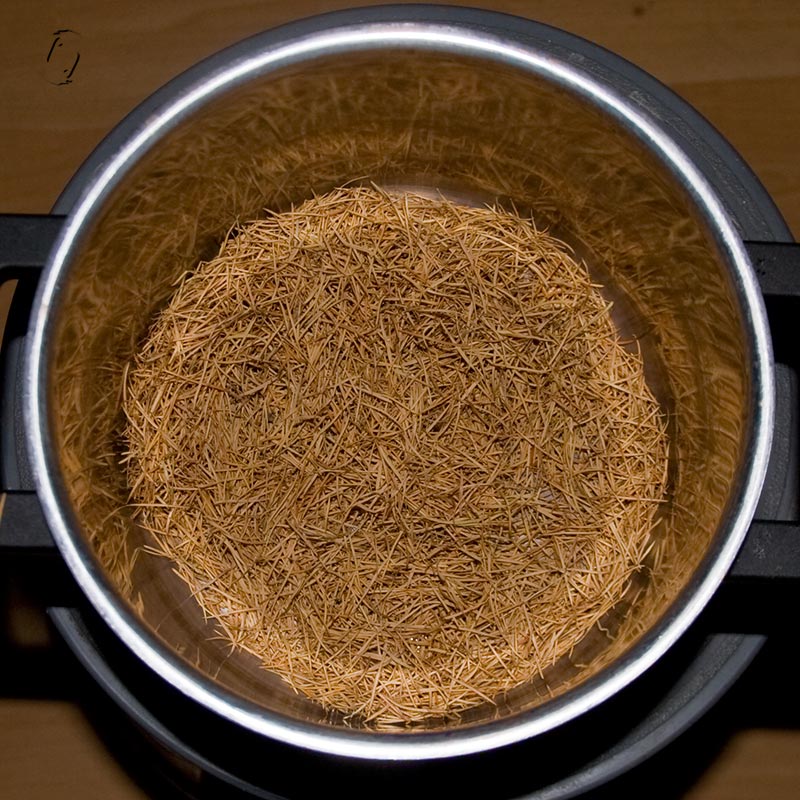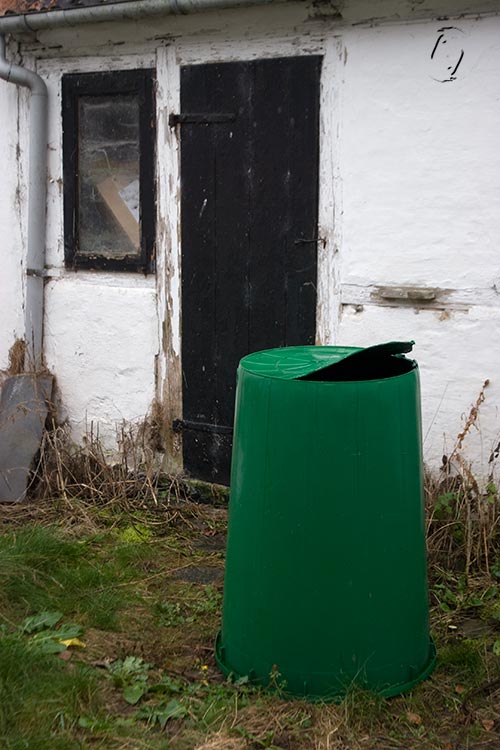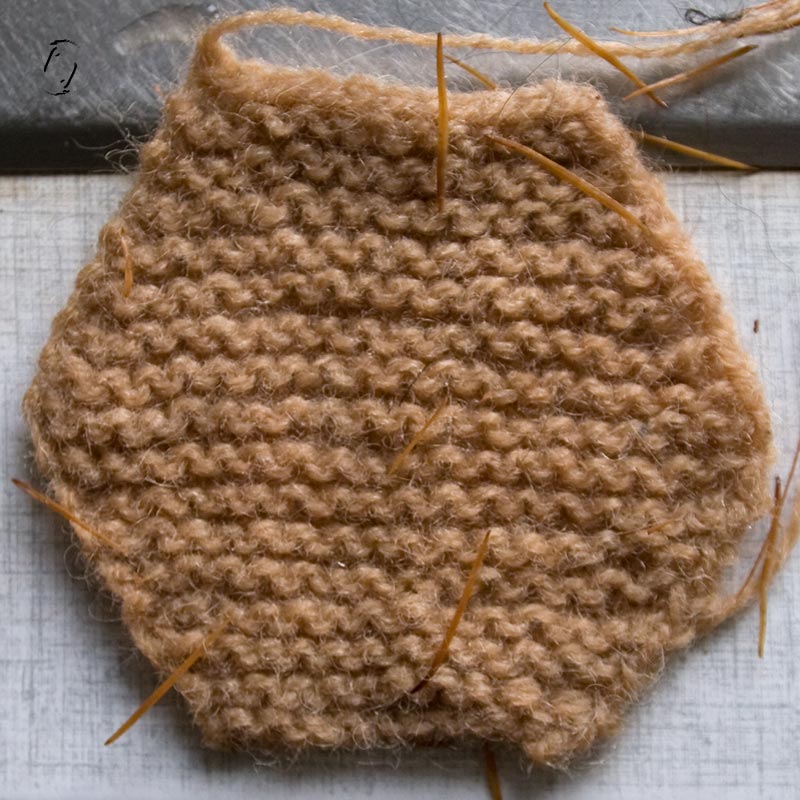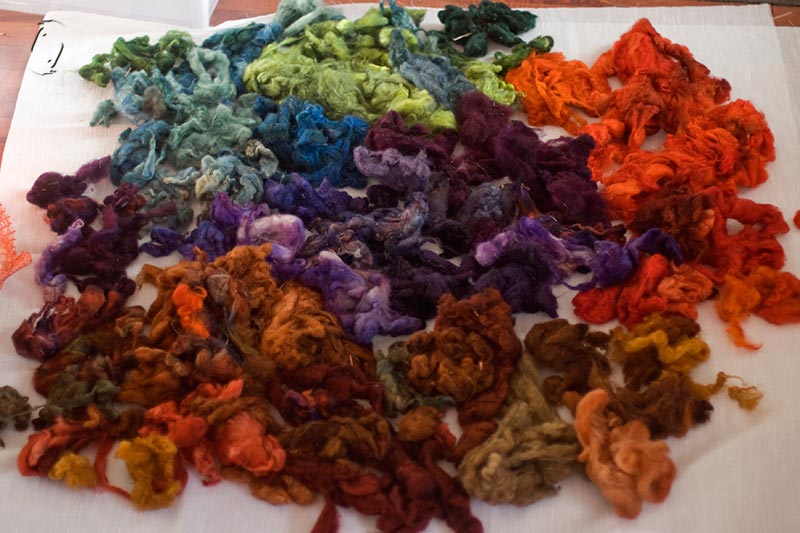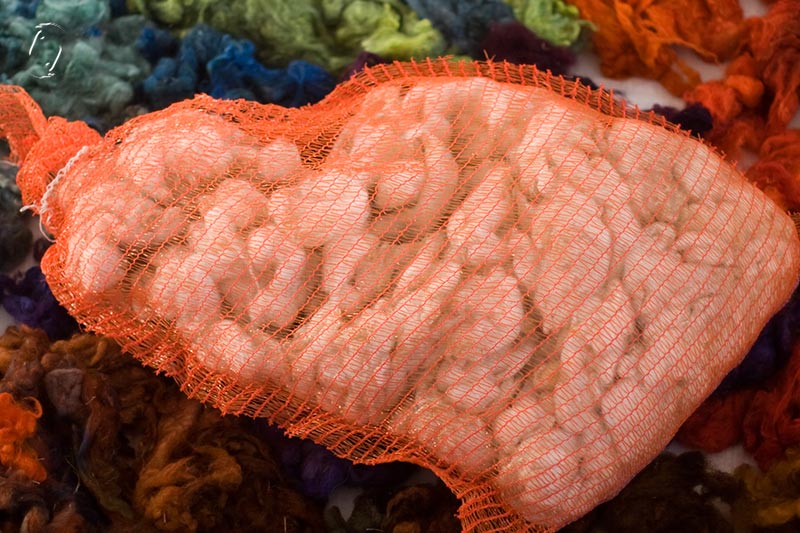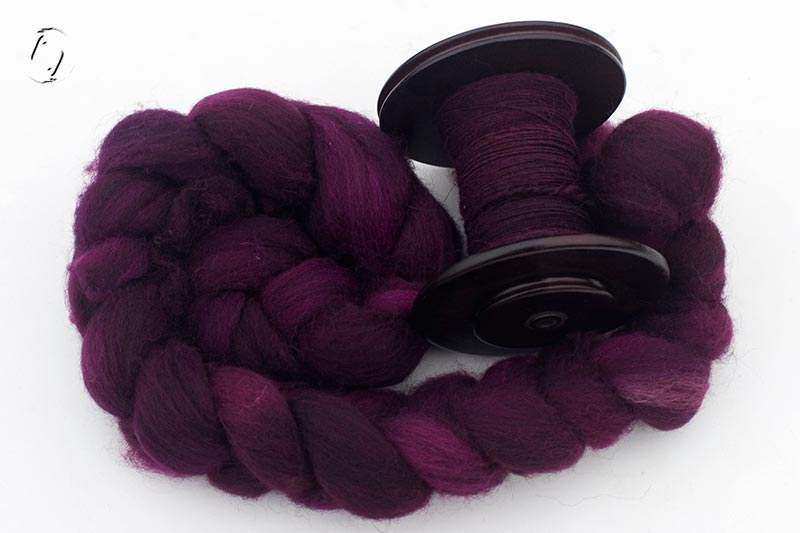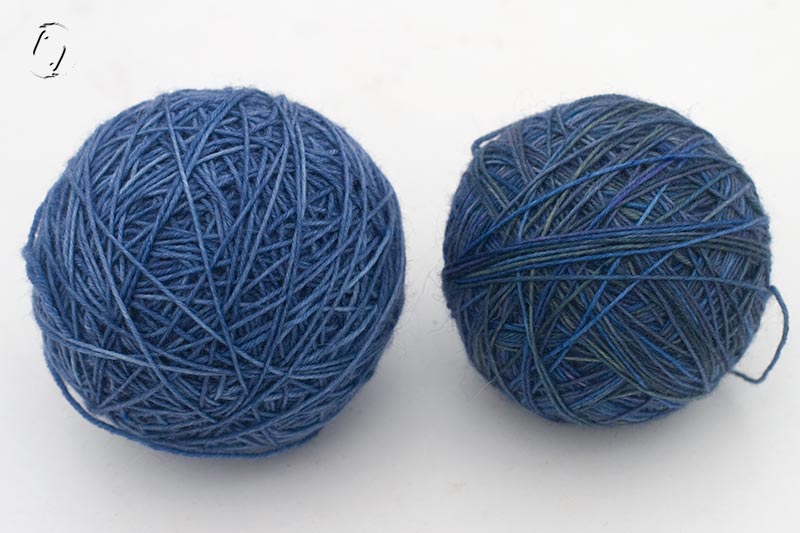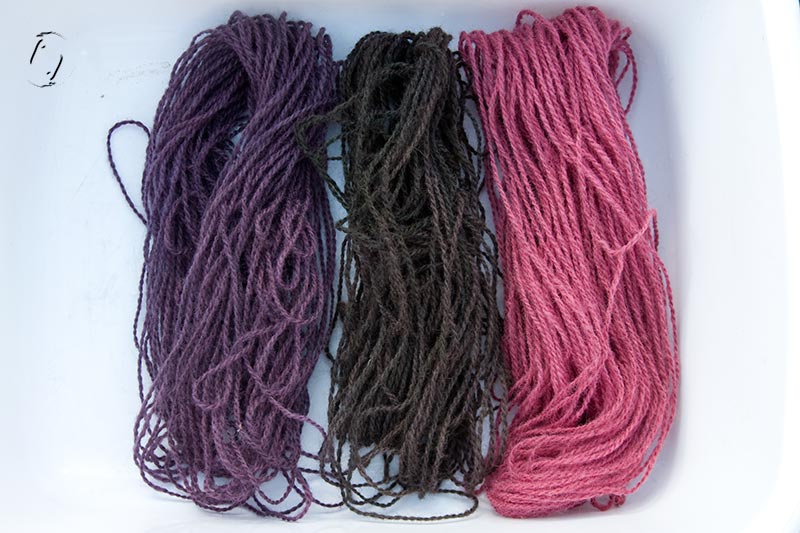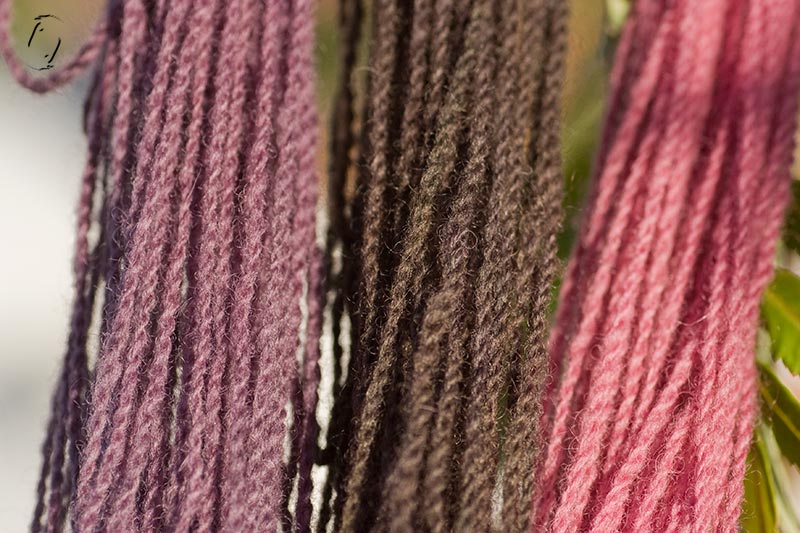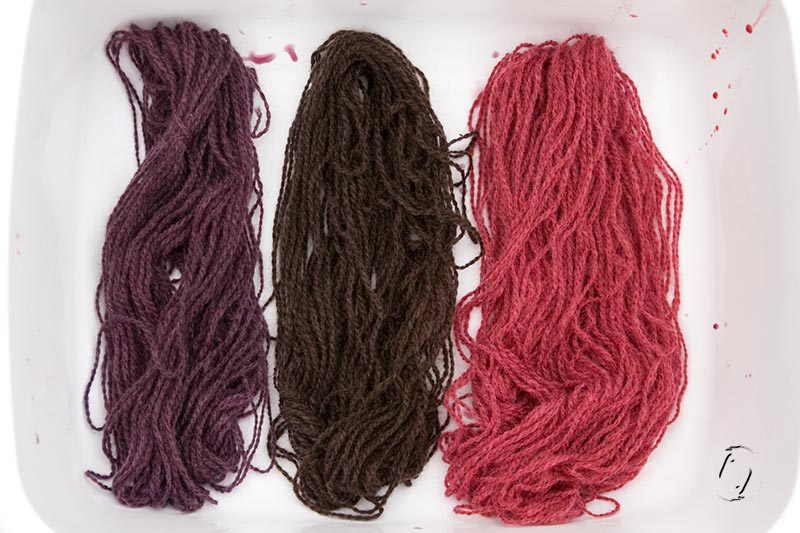Having managed to pick only a few handfuls of dead needles (not easy to get off tree, then frost happens and they’re all on the ground), I decided to just toss them in a pot rather than save. Put in some testknit of my usual plant dye yarn and see what happens for future reference.
There’s all sorts of things I could have tested, iron, mordants etc, but I don’t think I have enough dye. One might be able to scavenge from the ground in the forest where they grow large and many.
I used rain water, pH 6. After boiling the needles, pH 6.5? I wish I had some way of preserving that water barrel over winter, but the last one is proof that I can’t:
In the back you see part of the original old farm house on this property, from the 1860’s, now wood shed.
Some colour seems to be available, one could test quantity, pH values, mordants, modifiers. Could be a nice dulce span of colours, doesn’t always have to be pow! Different from any of my previous results of plant dyeing at least.
â Leave a Comment
.
Lærk 1
Et lille hurtigt farveeksperiment med visne lærketræsnåle, havde kun et par håndfulde som jeg kogte i pH neutralt regnvand.
Der er da noget farve at hente, måske mere hvis man har flere nåle, bruger bejse, jern og andet til en samling afdæmpede naturtoner? Anderledes end noget jeg har fået før i hvert fald.

